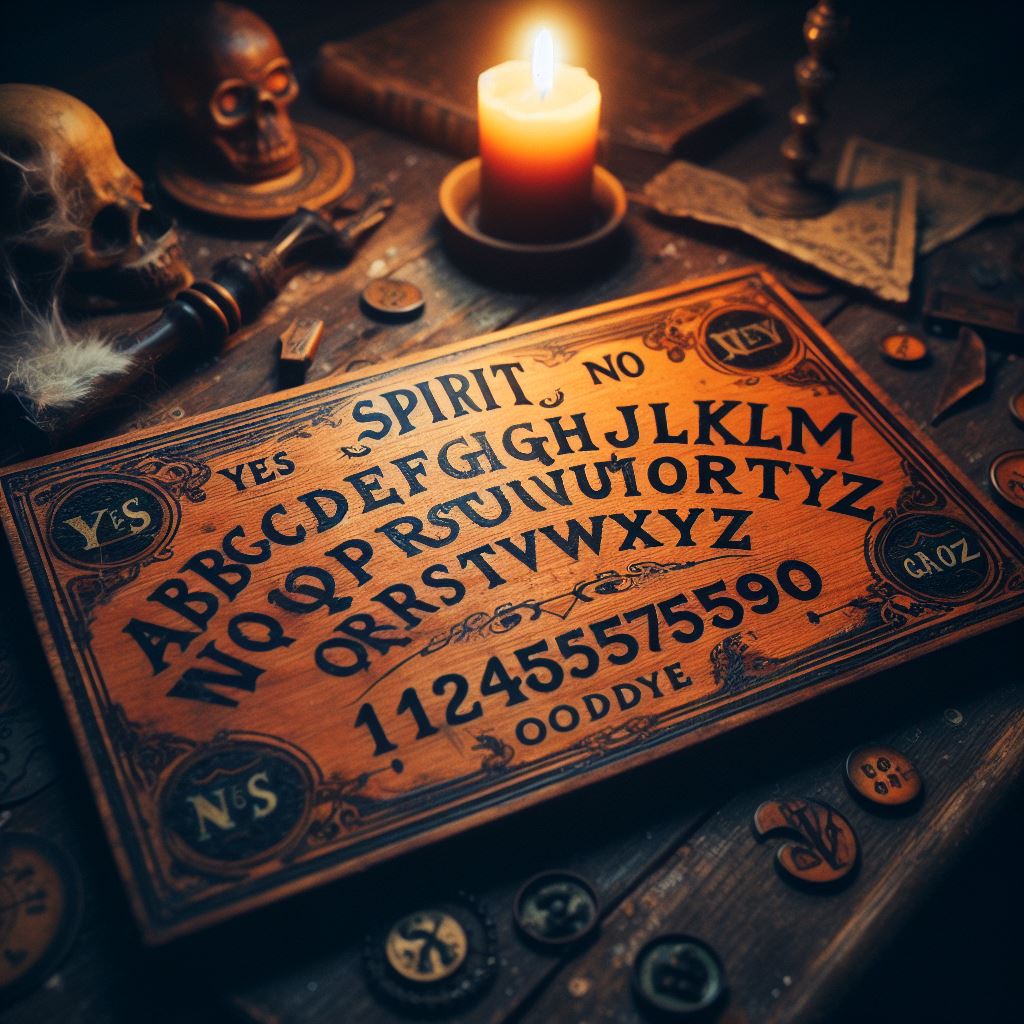Exploring the Ouija Board: History
Introduction: Exploring the Ouija board has long fascinated and intrigued people around the world, serving as a tool for communicating with the spirit realm. In this article, we delve into the history, controversies, and spiritual implications of the Ouija board, shedding light on its mystique and allure.
The Ouija board, also known as a spirit board or talking board, is a tool used in spiritualist practices and popularized as a game. It typically consists of a flat board marked with the letters of the alphabet, numbers 0-9, and various symbols, along with a planchette—a small, heart-shaped device that moves across the board. Participants place their fingers lightly on the planchette and ask questions, believing that spirits or other supernatural entities will guide its movement to spell out messages or provide answers. The use of Ouija boards has been a subject of controversy, with some viewing it as a harmless form of entertainment and others cautioning against its potential for inviting negative spiritual influences or psychological harm. While skeptics attribute the movement of the planchette to the ideomotor effect—a subconscious phenomenon where people move the planchette involuntarily—believers often interpret the responses as genuine communication with spirits or entities from the afterlife. Despite the debate surrounding its efficacy and safety, the Ouija board continues to intrigue and captivate individuals curious about the mysteries of the supernatural realm.

The Origins of the Ouija Board: The Ouija board, also known as a spirit board or talking board, has its origins in the late 19th century spiritualist movement, when séances and attempts to communicate with the dead were popularized. The modern Ouija board as we know it was patented in 1891 by Elijah Bond and Charles Kennard, marketed as a parlor game and a means of contacting spirits.
How the Ouija Board Works: The Ouija board consists of a flat board with letters, numbers, and other symbols, along with a planchette, a heart-shaped device that moves across the board to spell out messages. Users typically place their fingertips lightly on the planchette and ask questions, believing that spirits will guide its movements to provide answers.
Controversies and Skepticism: Despite its popularity, the Ouija board has also been met with skepticism and controversy. Critics argue that the movements of the planchette are influenced by the ideomotor effect—a subconscious phenomenon in which people move objects without consciously controlling them. Skeptics caution against attributing supernatural powers to the board and warn of potential psychological risks associated with its use.
Spiritual Insights and Interpretations: For many, the Ouija board serves as a doorway to the unseen realms and a means of accessing spiritual guidance and insight. Believers assert that the board can facilitate communication with departed loved ones, spirit guides, or higher-dimensional beings, offering comfort, clarity, and wisdom to those who seek it.
Ethical Considerations and Precautions: While some view the Ouija board as harmless entertainment, others approach it with caution and reverence, recognizing its potential for both positive and negative experiences. Practitioners advise setting clear intentions, maintaining respectful communication, and protecting oneself energetically before engaging with the board to ensure a safe and meaningful experience.
Conclusion: The Ouija board remains a fascinating and enigmatic tool that continues to captivate the human imagination. Whether regarded as a simple game or a portal to the spirit world, the Ouija board invites us to explore the mysteries of consciousness, communication, and the unseen realms, offering insights and experiences that defy easy explanation.
Disclaimer: It's important to exercise caution and discernment when using the Ouija board or engaging in any form of spirit communication. Individuals should approach such practices with respect, mindfulness, and awareness of potential risks to their mental, emotional, and spiritual well-being.